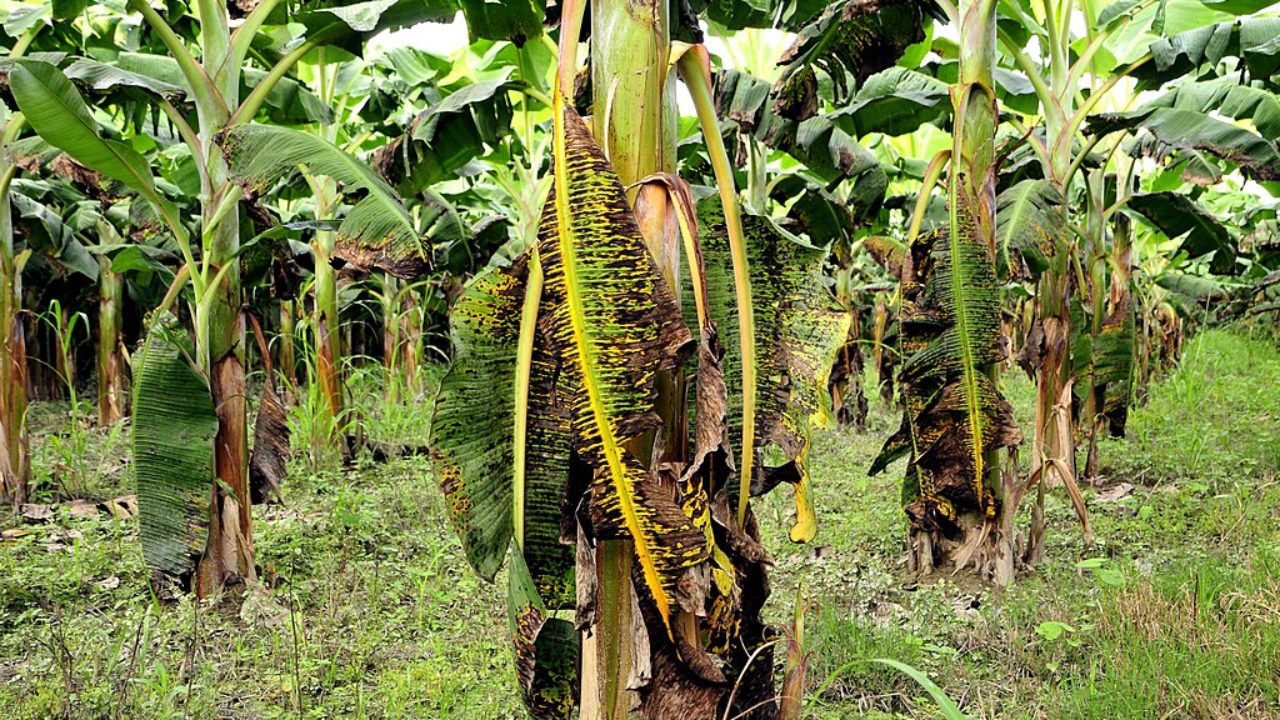MANAGING BLACK-LEAF STREAK DISEASE IN BANANAS
By Dennis Rapongo
Introduction
Bananas are a delicious and highly nutritious sources of fibre, potassium, vitamin B-6, vitamin C, various anti-oxidants and phytonutrients. They are also a good source of income and popular with both adults and children. In Kenya, they are probably the most affordable fruit and are available all-year-round. However, good things sometimes come with challenges and bananas are no exception.
One of the problems that farmers face is the black sigatoka disease, also known as the black-leaf streak disease.
The disease
The disease is caused by a fungus pseudocercospora fijiensisand can cause a 50 per cent drop in the weight of your banana bunch, and result in over 60 per cent loss in banana production. It attacks the banana foliage and goes on to the reproductive stage, affecting the final quality of the banana fingers. The disease is said to have originated in the Sigatoka riverbeds of Fiji, in 1963 (Jones 2000). This explains its name Sigatoka. It was first reported in Africa in 1978, in Gabon (Et.al Frossard 1980) and has over time spread to other countries.
Factors favouring occurrence of the disease
It is mostly favoured by wet and or humid conditions and its spread is accelerated by wind.
Symptoms
It grows and shows its symptoms in six stages of development, which include:
Stage 1
Yellowish streaks less than 1mm in width visible only on the underside of the leaves
Stage 2
Development of reddish-brown or brown streaks visible on the underside of the leaves and later on the upper side, colours of the streaks changes progressively to black.
Stage 3
The black streaks become larger and elongated.
Stage 4
Streaks grow into large brown spots on the underside of the leaves and black spots on the upper side of the leaves, the spots take a circular shape.
Stage 5
The spot turns totally black and spreads to the underside of the leaf blade, the black spot is surrounded by a yellow patch.
Stage 6
The centre of the spot dries out and turns grey, and is well surrounded by a black ring, which, in turn, is surrounded by a large bright yellow halos, the leaves dry out.
Development stages images

Control
Various approaches can be used to prevent and control the disease:
- When watering, always ensure that the water falls below the canopy and does not wet the leaves;
- Maintain high levels of farm hygiene;
- Prune excess and dry leaves;
- Ensure the drainage of your farm is good;
- Plant bananas using the recommended spacing for your variety to reduce congestion, which may lead to infections;
- Ensure good fertility and nutrition of your banana crop to ensure they are healthy.
However, if your banana crop is infected, follow the following practices to control the attack:
- Spray with fungicides during the 1st or 2nd stages of development;
- When they flower, prune the excess leaves and allow aeration through the stool;
- Prune the affected leaves.
Note: When the correct preventive measures, as indicated above are followed, there is 90 per cent accuracy your crops won’t be infected.

Banana crop affected by the disease.

Advanced stages of the Sigatoka disease.



